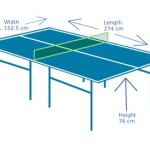Vegetable Garden Layout Ideas: Essential Aspects for Planting Success
Creating a vegetable garden is a rewarding endeavor that can provide fresh, nutritious produce all season long. However, proper planning and organization are crucial to ensure a successful harvest. One of the most important aspects of vegetable gardening is the layout, which can significantly impact the growth and productivity of your plants.
Here are some essential factors to consider when planning your vegetable garden layout:
Sun Exposure
Most vegetables require at least six hours of sunlight per day, so it's important to select a location that receives ample sunshine. Observe the direction of the sun's rays throughout the day and choose a spot that gets the most direct sunlight, particularly in the morning hours.
Soil Quality
Healthy soil is essential for growing thriving vegetables. Test your soil to determine its pH, nutrient levels, and texture. Amend the soil as needed with compost, manure, or other organic matter to improve its fertility and drainage.
Companion Planting
Companion planting is a technique that involves planting certain plants together to enhance their growth and productivity. Some plants, such as tomatoes and basil, benefit from being planted near each other because they help repel pests and attract beneficial insects. Research companion planting combinations and arrange your vegetables accordingly.
Crop Rotation
Crop rotation is the practice of rotating different types of vegetables in the same location over several seasons. This helps to prevent the buildup of pests and diseases in the soil and maintains soil health. Plan your garden layout to allow for crop rotation by dividing it into sections and rotating the vegetable types you plant in each section.
Vertical Gardening
If space is limited, consider vertical gardening techniques to maximize the growing area. Trellising, staking, and hanging baskets can be used to grow vining vegetables, such as tomatoes, cucumbers, and beans, vertically. This allows for more plants to be grown in a smaller space.
By carefully considering these factors and implementing the appropriate layout strategies, you can create a vegetable garden that optimizes growing conditions, minimizes pests and diseases, and maximizes your harvest. Remember to make any necessary adjustments based on the specific vegetables you choose to grow and your local climate conditions.

19 Vegetable Garden Plans Layout Ideas That Will Inspire You Small Gardens Planner

How To Design The Perfect Vegetable Garden Layout Plant

Vegetable Garden Layout 7 Tips For Your Ideal Blossom Blog

7 Vegetable Garden Layout Ideas To Grow More Food In Less Space

Veg Garden Idea Layout Vegetable Design Small Gardens

Vegetable Garden Layout 7 Best Design Secrets A Piece Of Rainbow

Garden Layout Ideas The Old Farmer S Almanac

Vegetable Garden Layout Planning Bonnie Plants

Planting Plans For Vegetable Garden At An Office Gardener S Supply

6 Vegetable Garden Layout Ideas What To Plant In Them
Related Posts








